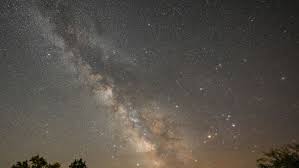Lyrid meteor shower peaks this week: Here's how to watch


(KTLA) — One of the oldest known meteor showers is lighting up the sky this week, just in time for Earth Day.
The Lyrid meteor shower will peak on Thursday and Friday and will be best seen from the Northern Hemisphere.
The Lyrids, which are active from April 15 to 29, are known for their fast and bright meteors that often leave glowing dust trains behind them as they streak through the sky, according to NASA.
In general, about 10-20 Lyrid meteors can be seen per hour during their peak, NASA says. But they could surprise stargazers with as many as 100 meteors per hour.
The Lyrids have been observed for 2,700 years, with the first recorded sighting going all the way back to 687 BC in China.
The name for the showers, Lyrids, comes from the constellation of Lyra.
Meteors come from leftover comet particles and bits from broken asteroids. Every year, Earth passes through the debris trails, bringing the bits into the planet’s atmosphere, where they create fiery and colorful streaks in the sky.
Lyrids, in particular, originate from comet C/1861 G1 Thatcher.
How to watch:The Lyrids are best viewed in the dark hours, after moonset and before dawn, according to NASA.
Stargazers are advised to find an area away from city or street lights and lie flat on their back and look up to the sky with their feet facing east.
“After about 30 minutes in the dark, your eyes will adapt and you will begin to see meteors,” NASA says. “Be patient — the show will last until dawn, so you have plenty of time to catch a glimpse.”
It might be best to watch from 11 p.m. to 2 a.m., before the moon rises high in the sky, according to the American Meteor Society.
Lyrids appear to particularly radiate out from the star Vega, one of the brightest stars in the night sky and easy to spot.
NASA says it’s better to view the Lyrids away from thee radiant, so they could appear longer and more spectacular.
The American Meteor Society recommends serious observers watch for at least an hour to make sure they catch the spectacle.


 United Kingdom
United Kingdom Argentina
Argentina  Australia
Australia  Austria
Austria  Brazil
Brazil  Canada
Canada  Germany
Germany  Ireland
Ireland  Italy
Italy  Malaysia
Malaysia  Mexico
Mexico  New Zealand
New Zealand  Poland
Poland  South Africa
South Africa  United States
United States 























